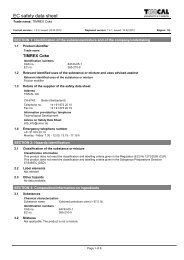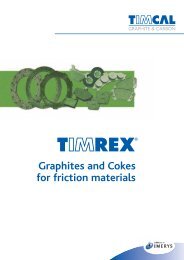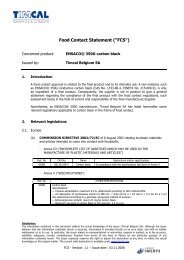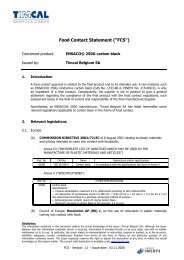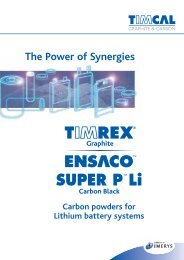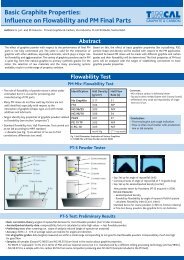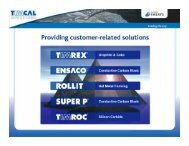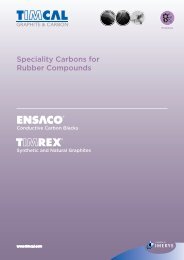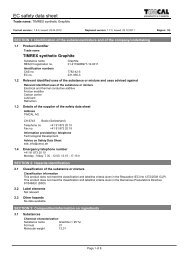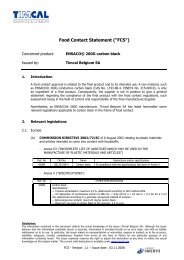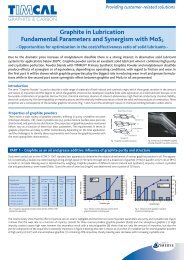Carbon Black Users Guide - Timcal
Carbon Black Users Guide - Timcal
Carbon Black Users Guide - Timcal
You also want an ePaper? Increase the reach of your titles
YUMPU automatically turns print PDFs into web optimized ePapers that Google loves.
as aciniform (grape-like cluster) particulate. On thecontrary, typically less than 60% of the total particlemass of soot or black carbon is composed of carbon,depending on the source and characteristics of theparticles (shape, size, and heterogeneity).In the case of commercial carbon blacks, organiccontaminants such as polycyclic aromatic hydrocarbons(PAHs) can only be extracted under veryrigorous laboratory analytical procedures (soxhletextraction using organic solvents and hightemperatures). These extracts, though they may besimilar to those derived from soot, are unique,however, because carbon black extracts exist only inextremely small quantities. Water and body fluidsare ineffective in removing PAHs from the surfaceof carbon black and, therefore, they are notconsidered to be biologically available.Two other commercial carbonaceous products oftenconfused with carbon black are activated carbonand bone black. Each is produced by processesdifferent from commercial carbon black and possessesunique physical and chemical properties.OTHER PARTICLE SIZE CHARACTERISTICSThe term “primary particle diameter” raises manyquestions when describing carbon black particle size.Because manufactured carbon black is made eitherby partial combustion or thermal decomposition ofliquid or gaseous hydrocarbons, the final product isincorrectly characterized as having exceptionallysmall particles, sometimes even described as ultrafines(particles < 0.1 micrometers in aerodynamic diameter).In fact, while the starting particle or nodule of carbonblack is extremely small (typically less than 300nanometers), a complex structure sequence rapidlyfollows within the closed reactor. The near sphericalnodules coalesce into particle aggregates thatbecome the basic indivisible entities of carbonblack. Strong electrical forces maintain the bondbetween aggregates and promote the formation ofagglomerates, which are the result of hundreds tothousands of strongly adhering aggregates. <strong>Carbon</strong>black in commerce is encountered as agglomerates.Once formed, agglomerates do not break down tothe aggregate level. Figure 2 depicts the sequence ofstructure development, while providing typicalparticle size ranges at each stage. When carbon blackis shipped, it is normally formed into pellets tofacilitate the ease of handling and to reduce thecreation of dust. <strong>Carbon</strong> black pellets generally fallbetween 0.1 and 1.0 millimeters in size.Figure 2. Sequence of Structure DevelopmentNODULE15-300 nanometersAGGREGATE85 to 500 nanometersAGGLOMERATE1-100+ micrometers3



